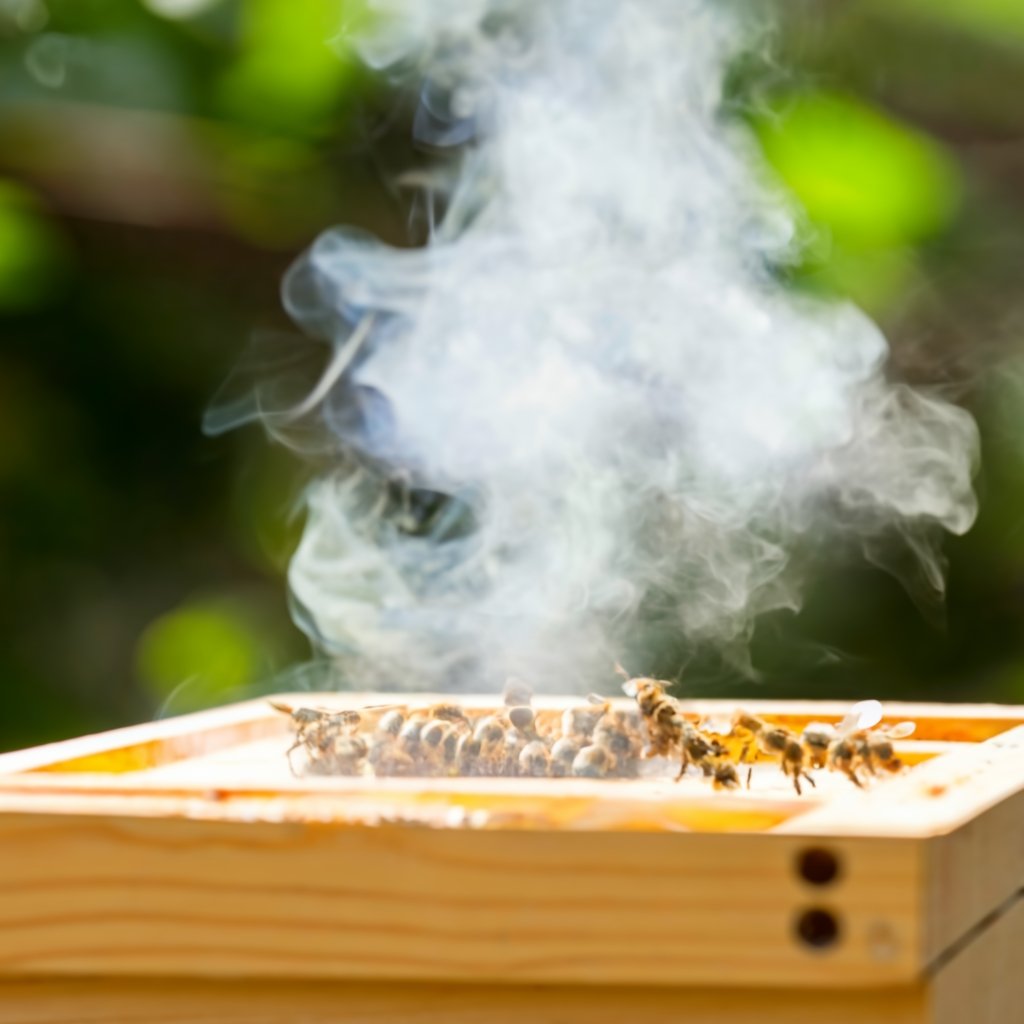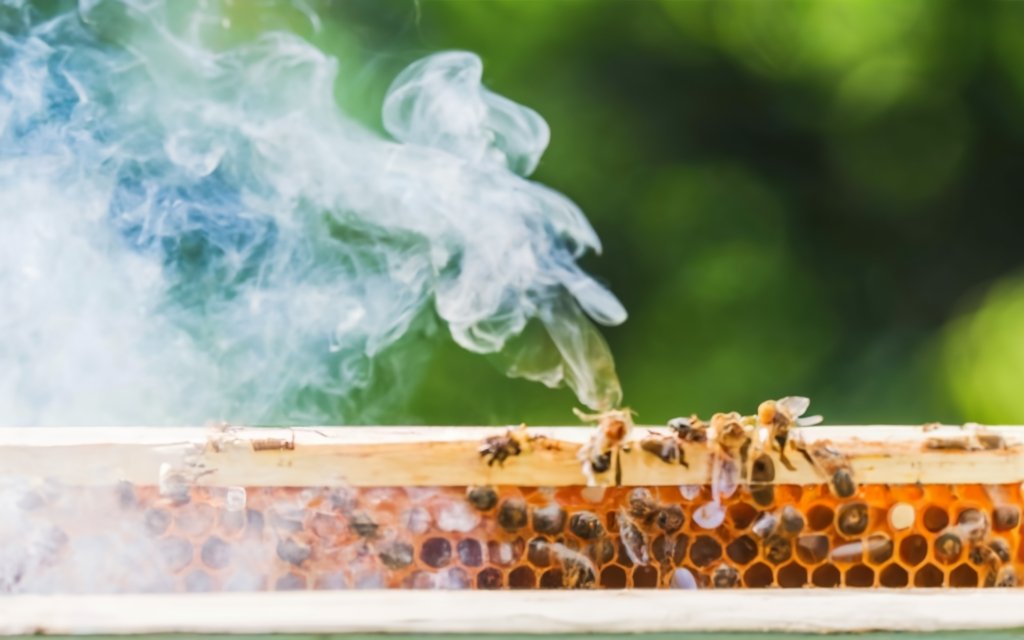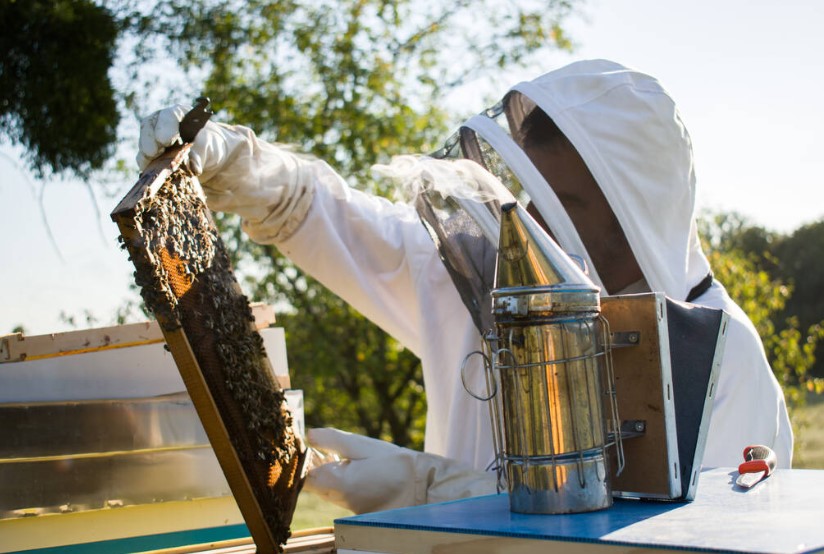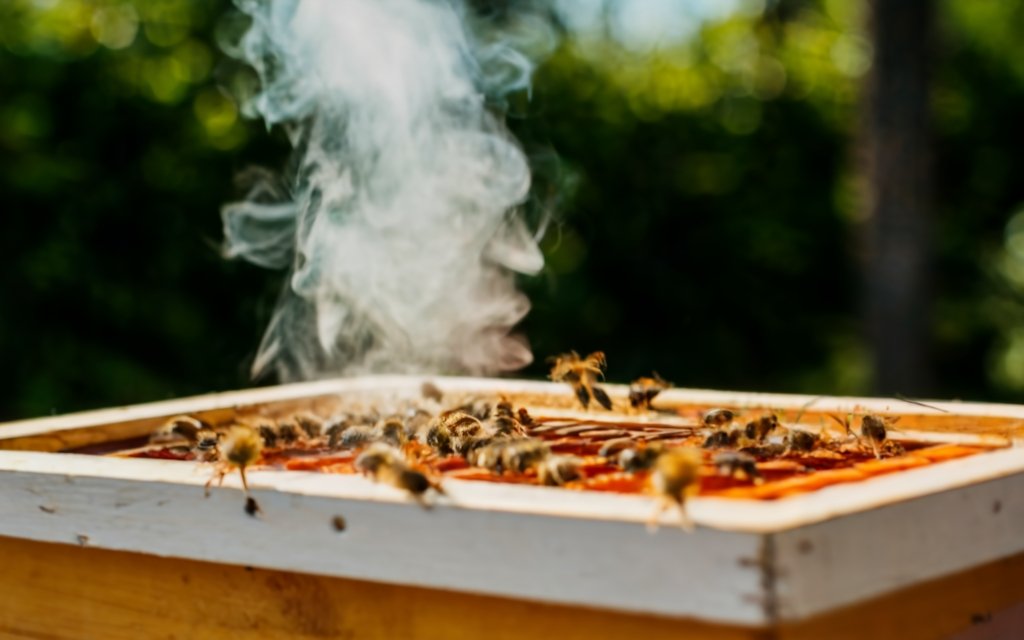Beekeeping Smokers
Transform your beekeeping journey with our advanced smokers – click now to see how you can achieve peaceful hive management effortlessly!
Table of Contents
- 1 Beekeeping Smokers
- 1.1 Navigating the World of Beekeeping Smokers: Basics and Best Practices
- 1.2 Key Features About Beekeeping Smokers
- 1.3 Components of a Beekeeping Smoker
- 1.4 Types of Beekeeping Smokers
- 1.5 Materials Used in Construction
- 1.6 Choosing the Right Size
- 1.7 Fuel for Smokers
- 1.8 Using a Beekeeping Smoker
- 1.9 Common Issues and Troubleshooting
- 1.10 Maintenance and Safety
- 1.11 Innovations and Trends
- 1.12 Benefits of Using a Beekeeping Smoker
- 1.13 Environmental Considerations
- 1.14 Beekeeper Experiences and Best Practices
- 1.15 Conclusion
- 1.16 BEEKEEPING SMOKERS – FAQs
- 1.16.1 What is a beekeeping smoker?
- 1.16.2 How does a bee smoker work?
- 1.16.3 What materials can be used as fuel in a bee smoker?
- 1.16.4 How long does the smoke from a bee smoker last?
- 1.16.5 Is the smoke from a bee smoker harmful to bees?
- 1.16.6 How often should a bee smoker be cleaned?
- 1.16.7 Can I make a DIY bee smoker?
- 1.16.8 What is the best way to light a bee smoker?
- 1.16.9 How do I extinguish a bee smoker?
- 1.16.10 How do I store my bee smoker when not in use?
- 1.16.11 What size bee smoker should I get?
- 1.16.12 What are the safety precautions when using a bee smoker?
- 1.16.13 Can I use aromatic herbs as fuel in my bee smoker?
- 1.16.14 How close should I hold the smoker to the hive?
- 1.16.15 What is the main purpose of using a bee smoker?
- 1.16.16 How can I tell if my bee smoker is working correctly?
- 1.16.17 Are there electric bee smokers?
- 1.16.18 What are the components of a bee smoker?
- 1.16.19 Can I use a bee smoker in all weather conditions?
- 1.16.20 What's the difference between a stainless steel and a galvanized steel bee smoker?
- 1.16.21 How do I maintain the bellows of my bee smoker?
- 1.16.22 Is it necessary to wear gloves when using a bee smoker?
- 1.16.23 How much fuel should I put in my bee smoker?
- 1.16.24 Can I leave my bee smoker unattended while lit?
- 1.16.25 What are the signs of an overused bee smoker?
Beekeeping smokers are an indispensable tool in the art of beekeeping, playing a crucial role in hive management and bee safety. At its core, a beekeeping smoker is designed to produce smoke that calms bees, making them less aggressive and more manageable during hive inspections or when harvesting honey. The smoke masks the alarm pheromones released by guard bees, effectively preventing the colony from going into defense mode. This not only protects the beekeeper from stings but also minimizes stress on the bees, contributing to the overall health of the hive. Smokers consist of a fire chamber where the fuel is burned, a bellows to pump air into the chamber to keep the fuel alight, and a nozzle through which the smoke is directed into the hive.
Choosing the right fuel for a smoker is pivotal in ensuring its effectiveness and safety. Common fuels include natural materials such as pine needles, hessian, burlap, or untreated cotton, which produce a cool, thick smoke. Synthetic materials are generally avoided as they can be harmful to bees. Using the smoker involves lighting the fuel in the fire chamber and gently pumping the bellows to produce and direct smoke into the hive entrance. This action should be done with care, as excessive smoke can overwhelm the bees. Maintenance is also key for the longevity of the smoker. Regular cleaning to remove ash and debris ensures it remains in good working condition and reduces the risk of unintended fires. Safety precautions, such as using the smoker in a well-ventilated area and ensuring it is completely extinguished after use, are essential practices for every beekeeper.
In the evolving world of beekeeping, the design and functionality of smokers continue to advance. From traditional manual models to more modern electric ones, these tools have seen improvements in safety features, durability, and environmental sustainability. The continued innovation in beekeeping smokers reflects the growing awareness of their importance in effective hive management, while also underscoring the commitment to bee welfare and environmental responsibility within the beekeeping community.
Key Features About Beekeeping Smokers
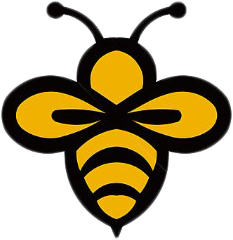
Functionality: Designed to produce smoke that calms bees, reducing aggression during hive inspections.

Components: Typically consists of a fire chamber, bellows, nozzle/spout, and a lid.

Fuel Flexibility: Capable of using various materials like pine needles, wood chips, and cotton fabric as fuel.

Material Construction: Commonly made from durable materials such as stainless steel or galvanized steel for longevity.

Size Variations: Available in different sizes to suit the scale of beekeeping operations, from hobbyist to commercial.

Type Varieties: Includes manual and electric models, each catering to different beekeeping preferences and needs.

Safety Features: Often equipped with features to ensure safe operation, such as heat shields and secure lids.

Ease of Use: Designed for simplicity in lighting, operating, and directing smoke into the hive.

Portability: Compact and lightweight designs are available for ease of handling and transport.

Maintenance Friendly: Constructed to allow easy cleaning and maintenance for efficient and long-lasting use.

Environmental Consideration: Supports the use of eco-friendly and sustainable fuels.

Innovative Designs: Continuous advancements in design for improved safety, efficiency, and environmental impact.

Versatility in Fuel Capacity: Accommodates varying amounts of fuel for different durations of use.

Effective Smoke Production: Engineered to produce a consistent and cool stream of smoke.

Durability: Built to withstand regular use and the outdoor elements, ensuring a long service life.
Components of a Beekeeping Smoker
Fire Chamber
The main body where the fuel is burned.
Bellows
Attached to the fire chamber, used to pump air into it to keep the fuel burning.
Nozzle/Spout
Directs the smoke into the hive.
Lid
Covers the fire chamber, can be opened to add fuel.
Types of Beekeeping Smokers
Manual Smokers
Require manual operation of the bellows.
Electric Smokers
Use a battery-powered fan to generate airflow.
Don’t miss out on our latest beekeeping smoker models – designed for maximum efficiency and ease of use. Click here to enhance your beekeeping practice now!
Materials Used in Construction

Common materials include stainless steel, galvanized steel, and sometimes copper.

Stainless steel is preferred for its durability and rust resistance.
Choosing the Right Size

Size depends on the scale of beekeeping activities.

Smaller models for hobbyists; larger models for commercial beekeepers.
Fuel for Smokers

Variety of materials can be used, such as pine needles, wood chips, cardboard, burlap, or cotton fabric.

The choice of fuel affects the smoke’s temperature and density.
Using a Beekeeping Smoker

Light the smoker using a small, ignitable material like newspaper.

Add the chosen fuel gradually and pump the bellows to generate smoke.

Direct smoke into the hive gently from a few inches away.
Common Issues and Troubleshooting
Overheating
Ensure proper airflow and avoid overfilling the fire chamber.
Clogging
Regular cleaning to remove ash and residue.
Wear and Tear
Regular checks for any damage, especially in the bellows and fire chamber.
Maintenance and Safety
Regular cleaning is crucial to prevent clogging and ensure efficient operation.
Safety precautions include using in well-ventilated areas and never leaving the smoker unattended while lit.
Store in a cool, dry place, ensuring it’s completely extinguished.
Innovations and Trends
Development of more eco-friendly smokers and fuels.
Introduction of electric smokers for consistent smoke flow.
Design improvements for greater safety and ease of use.
Benefits of Using a Beekeeping Smoker
Calms bees effectively, reducing the risk of stings during hive inspections.
Facilitates easier and safer management of bee colonies.
Environmental Considerations
Importance of using sustainable, non-toxic fuels.
Impact of smoke on the surrounding environment.
Beekeeper Experiences and Best Practices
Experienced beekeepers often prefer natural, readily available fuels.
Emphasis on minimal use of smoke to avoid stressing the bees.
Sharing of techniques and tips within the beekeeping community.
Conclusion
Beekeeping smokers are invaluable tools in the beekeeping industry, facilitating safe and effective hive management. Their proper use and maintenance are crucial for the well-being of both the bees and the beekeeper. As environmental concerns and technological advancements continue to evolve, so too will the design and functionality of beekeeping smokers.
BEEKEEPING SMOKERS – FAQs
What is a beekeeping smoker?
A beekeeping smoker is a device used by beekeepers to generate smoke, which calms bees and reduces their tendency to sting during hive inspections.
How does a bee smoker work?
A bee smoker works by burning a fuel source to produce smoke, which is then directed into the beehive. The smoke masks alarm pheromones released by the bees, calming them and making hive management easier.
What materials can be used as fuel in a bee smoker?
Common fuel materials for bee smokers include pine needles, cardboard, wood chips, burlap, and untreated cotton fabric, chosen for their ability to smolder and produce cool, thick smoke.
How long does the smoke from a bee smoker last?
The duration of smoke from a bee smoker depends on the amount and type of fuel used, but typically it lasts long enough to manage a few hives in one session, approximately 20-30 minutes.
Is the smoke from a bee smoker harmful to bees?
When used properly, the smoke from a bee smoker is not harmful to bees. It should be cool and used sparingly to avoid any adverse effects.
How often should a bee smoker be cleaned?
A bee smoker should be cleaned regularly, ideally after each use, to remove ash and residue, ensuring efficient operation and longevity of the device.
Can I make a DIY bee smoker?
While it’s possible to create a DIY bee smoker, it’s recommended to use a professionally made smoker for safety and efficiency.
What is the best way to light a bee smoker?
The best way to light a bee smoker is to start with a small, easily ignitable material like newspaper, then add your chosen fuel gradually once the initial material is burning well.
How do I extinguish a bee smoker?
To extinguish a bee smoker, stop adding fuel, close the lid, and let it burn out in a safe area. Ensure it’s completely out before storage.
How do I store my bee smoker when not in use?
Store the bee smoker in a dry, cool place, away from flammable materials, and ensure it’s completely extinguished and cleaned before storage.
What size bee smoker should I get?
The size of the bee smoker should match your beekeeping scale; small smokers are sufficient for hobbyists, while larger ones are better for commercial beekeepers.
What are the safety precautions when using a bee smoker?
Always use a bee smoker in a well-ventilated area, keep it away from flammable materials, and ensure it’s completely extinguished after use. Wear protective beekeeping gear to avoid burns.
Can I use aromatic herbs as fuel in my bee smoker?
Yes, aromatic herbs can be used as fuel in a bee smoker, but they should be used sparingly and mixed with traditional fuels for best results.
How close should I hold the smoker to the hive?
Hold the smoker a few inches from the hive entrance, directing the smoke gently into the hive, without overheating the bees.
What is the main purpose of using a bee smoker?
The main purpose of using a bee smoker is to calm the bees and mask their alarm pheromones, making hive inspections and management safer and easier.
How can I tell if my bee smoker is working correctly?
A properly working bee smoker will produce a steady stream of cool, white smoke and should not be difficult to pump or excessively hot on the outside.
Are there electric bee smokers?
Yes, electric bee smokers are available, offering a more consistent smoke flow, though they are less common than traditional manual smokers.
What are the components of a bee smoker?
A bee smoker typically consists of a fire chamber, a bellows for pumping air, and a nozzle for directing smoke, often made of metal and heat-resistant materials.
Can I use a bee smoker in all weather conditions?
A bee smoker can be used in most weather conditions, but extra caution should be taken in windy or very dry conditions due to increased fire risk.
What's the difference between a stainless steel and a galvanized steel bee smoker?
Stainless steel smokers are more durable and resistant to rust, while galvanized steel smokers are often cheaper but less resilient over time.
How do I maintain the bellows of my bee smoker?
Maintain the bellows by keeping them dry and clean, and check regularly for any tears or damage that could affect the airflow.
Is it necessary to wear gloves when using a bee smoker?
It’s advisable to wear gloves when using a bee smoker to protect your hands from heat and any debris from the fuel.
How much fuel should I put in my bee smoker?
Fill the fire chamber about halfway with fuel, allowing enough room for airflow to maintain a steady smoke output.
Can I leave my bee smoker unattended while lit?
Never leave a lit bee smoker unattended as it poses a fire hazard. Always monitor it when in use.
What are the signs of an overused bee smoker?
Signs of an overused bee smoker include difficulty in producing smoke, excessive rust or damage, and poor airflow from the bellows.



